Verizon broadband home internet has been around for many years, first in the form of DSL and later in the form of Fios. Fios uses a fiber optic network to deliver residential internet services with up to 1 Gbps in bandwidth. Fios has a relatively limited coverage area, primarily focused on dense urban deployments.
Verizon launched its 5G home internet service in 2018. Verizon 5G aims to provide high-speed residential internet service to additional areas of the United States with speeds of up to 1 Gbps. Right now, location availability is somewhat limited, and the fastest speeds are limited to 5G ultrawideband areas utilizing millimeter wave frequencies.
5G is slated to revolutionize how we connect to the internet in the future. Fiber is currently the gold standard for fast and reliable internet connectivity. How does Verizon 5G Home Internet stack up against Fios Internet?

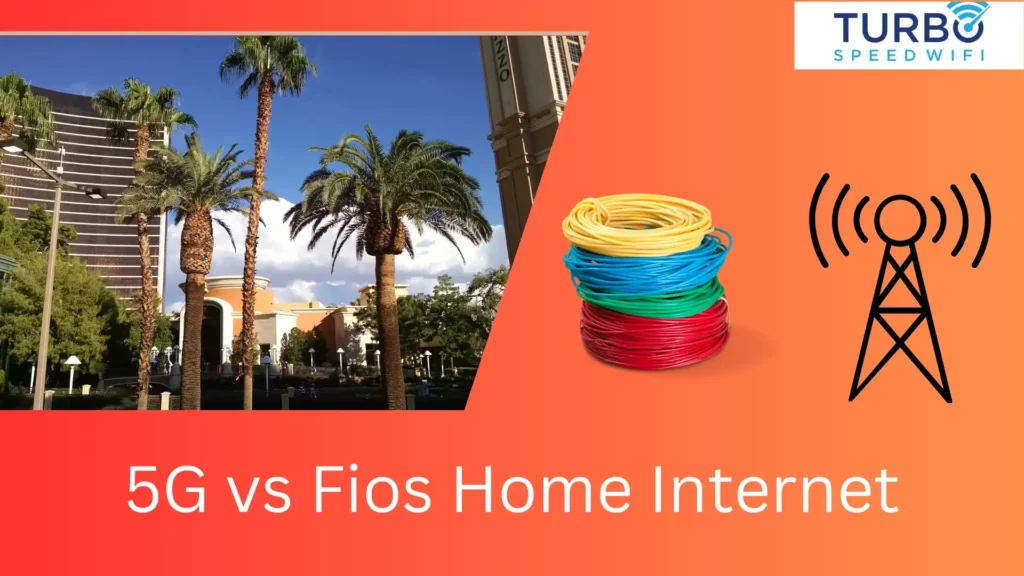
Table of Contents
Fios vs 5G: Pricing Comparison
| Verizon 5G Home Internet | Verizon Fios Internet | |
| 300 Mbps Fios Plan (With cell phone plan) | N/A | $25 |
| 300 Mbps Fios Plan (Without cell phone plan) | N/A | $50 |
| 500 Mbps Fios Plan (With cell phone plan) | N/A | $45 |
| 500 Mbps Fios Plan (Without cell phone plan) | N/A | $70 |
| Gigabit Fios Plan (With cell phone plan) | N/A | $65 |
| Gigabit Fios Plan (Without cell phone plan) | N/A | $90 |
| 5G Home Internet (With cell phone plan) | $25 | N/A |
| 5G Home Internet (Without cell phone plan) | $50 | N/A |
Verizon 5G Home Internet costs $50 per month and includes all taxes and fees in the base price. With select Verizon Unlimited cell phone plans, you can get Verizon 5G Home Internet for as little as $25 per month.
Verizon Fios has a more complicated pricing structure. They offer several plans and also offer promotional pricing to new customers. Currently, Verizon Fios starts at $25 per month for their 300 Mbps internet plan. Getting this pricing requires signing up for autopay and having a Verizon cell phone plan.
Without a Verizon cell phone plan, the based 300 Mbps plan will cost you $50 per month. Fios also offers a 500 Mbps plan and a gigabit plan. The gigabit plan ranges from $65 – $90 per month, depending on if you have a Verizon cell phone plan.
Pricing is similar for both services. Overall, Fios is the better value given that the lowest Fios plan cost the same as Verizon 5G Home Internet yet delivers several times the performance. Verizon Fios also comes with a 2 year price guarantee or a 3 year price guarantee depending on the plan you select.
Both Fios and Verizon 5G Home Internet come with unlimited data that is not capped.
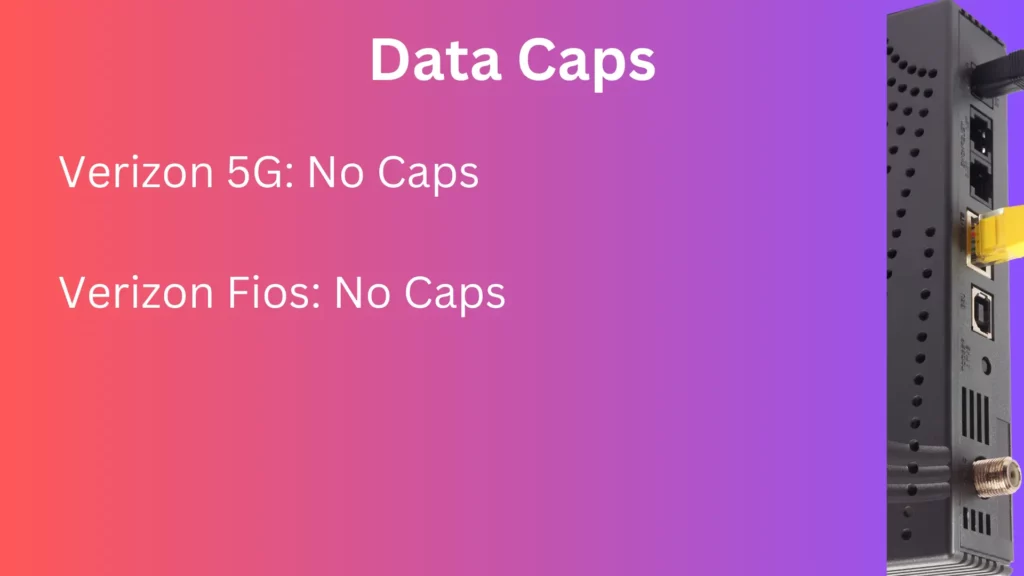
Fios vs 5G Home Internet: Download Speeds
Download speeds with Verizon Fios start out at 300 Mbps with their lowest tier plan. This is enough for the vast majority of users. 300 Mbps is the same as what Spectrum offers on their base plan.
If you wish to go higher, they offer plans up to 1 Gbps in bandwidth. For some households with several heavy users, these higher speed tiers are a godsend. They enable multiple 4K streams, plus video conferencing, plus huge file downloads to all be happening at the same time with no noticeable impact on performance. If you have a real need for speed, Fios has you covered with a plan that is fast enough for anyone.
Verizon 5G, on the other hand, does not have different speed tiers. Instead, they advertise speeds of up to a gig in select areas. Real-world speeds will vary greatly and generally be lower than what you get, even on a basic Fios plan. If you do not have millimeter wave signal available at your home, your speeds will be even lower, likely under 100 Mbps.
During off-peak hours you may see speeds actually temporarily go higher than usual. The issue is that during the critical evening peak hours when everyone is streaming Netflix and other video content, speeds tend to tank. Speeds as low as 20 Mbps are not uncommon during peak hours, especially in areas not covered by millimeter wave technology.
Real-world speed tests have shown download speeds of about 100 Mbps being most common, with areas utilizing millimeter wave technology being faster. Performance depends greatly on the time of day and the number of users connected to the local cell tower.
Based on my own testing of Verizon 5G Home Internet, I can say that download speeds are all over the board. They can vary from minute to minute. I was disappointed to find that 5G speeds tend to drop during peak hours to speeds much lower than what traditional cable or fiber-based internet offer.
Both services offer the potential for fast speeds. The difference is that with Fios, you are pretty much guaranteed to get at least 80 – 90% of the bandwidth you subscribe to at all times. This includes during peak hours. With 5G technology, download speeds can be hit or miss. Unfortunately, when they miss, it is usually during peak hours when you need the bandwidth the most.
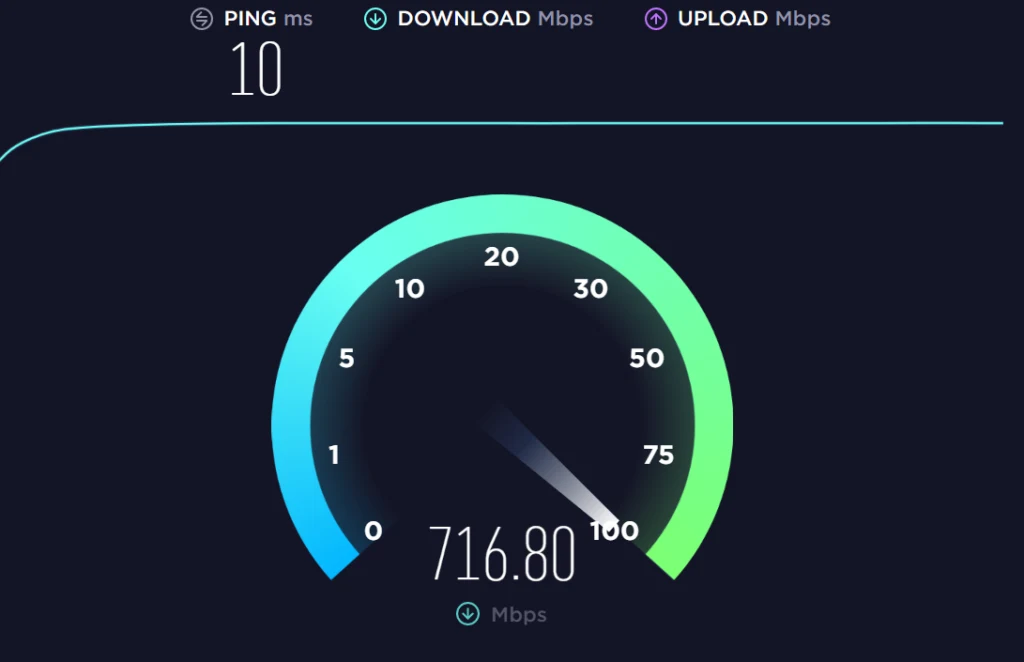
Verizon Fios vs 5G: Upload Speed
Verizon Fios internet connections are symmetrical in bandwidth. The speed of your downloads will be the same as the speed of your uploads. For example, if you get the 300 Mbps package, you will get 300 Mbps in both directions.
This is typical with most providers of fiber-based internet. It is also a huge selling point for Fios, especially for people who either work from home, operate a business out of their home, or do a lot of online content creation. It also makes uploading large files to cloud storage services such as Dropbox, Google Drive, or OneDrive a breeze.
Upload speeds with Verizon 5G home internet are usually in the 12 Mbps – 25 Mbps range. This is comparable to many lower-tier cable-based internet connections but much lower than what you get with Fios. As with downloads, speeds also tend to be lowest during peak hours.
Based on my testing of Verizon 5G Home Internet, I would not recommend the service if you need consistent upload bandwidth. I frequently saw upload speeds of 5 Mbps or less during peak hours from 5 PM to 11 PM.
Get Verizon Fios starting at $25 per month with setup fee waived

Fiber Internet vs 5G Internet: Latency (Ping)
Latency (ping) with Verizon Fios is generally very low. This makes it a popular choice for gamers. It is also a great choice for VoIP and other real-time communications. It makes Zoom calls very fluent and free from unwanted delay.
If you work from home or play online games, Fios is a great option, as is a cable internet service from a provider such as Comcast (Xfinity) or Spectrum. Latency in the single digits is likely with Verizon Fios to nearby servers. The stability of the ping is also excellent and not generally affected by your neighbor’s usage or the time of day.
Latency is an area where Verizon 5G home internet fails to impress anyone. Over the course of any minute pings can range all the way from 45 ms all the way up to 300+ ms. This makes it unsuitable for online gaming, Zoom meetings, VoIP, or any other real-time communications. During the off-peak overnight hours, performance is generally better.
I tested Verizon 5G home internet in Massachusetts and found that ping spikes of 300+ ms were the norm and not the exception during peak hours. This is completely unacceptable when you consider that even a lousy DSL connection can give you a stable 50 ms – 60 ms ping.
Off-peak latencies can be in the 45 – 90 ms range but occasionally spiking higher. From 4 PM to 11 PM every day, latency is generally in the 100+ ms range with spikes to 300+ ms.
For this reason, Verizon’s 5G home internet is not something I can recommend for gaming or other real-time communications. Packet loss and jitter also tend to be much higher on the 5G service when compared to Verizon Fios or virtually any other wired internet service, including even DSL.
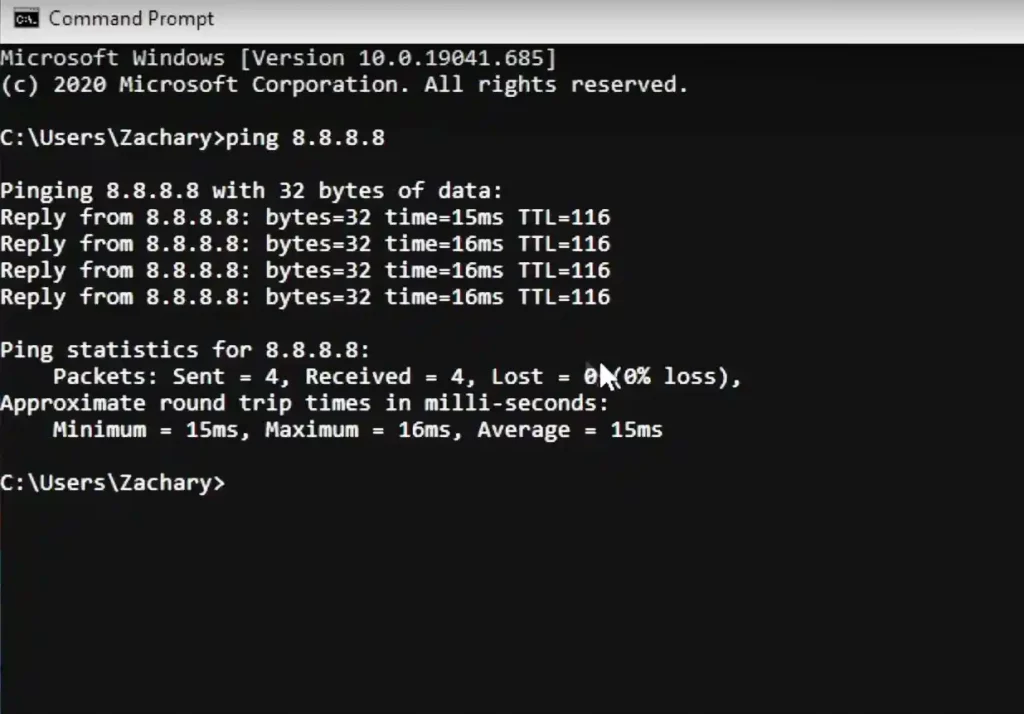
Fios vs Verizon 5G: Gaming Performance
Gaming performance on Verizon Fios is excellent in most cases. You will get the lowest latency possible with a fiber-based internet connection. This is completely to be expected. Additionally, Fios gives you a proper public IPv4 address and does not rely on CGNAT technology to provide you with your IP address. This is great for gaming as it allows for port forwarding.
I will say it upfront. If you are a gamer, 5G internet is not for you, at least at this time. Latency is far too high, and inconsistencies in performance are a real deal breaker for gaming.
Another potential downside of using Verizon 5G Home Internet for gaming is the use of CGNAT. Like most cell phone carriers, Verizon uses CGNAT to assign IP addresses to subscribers. This is generally okay for web browsing and watching Netflix. For gaming, CGNAT is not preferable as it creates a double NAT environment.
The issue primarily affects people that are looking to get an “Open NAT Type” on a PlayStation or Xbox console. With CGNAT, it is not possible to get an Open NAT Type without using a VPN service. In most cases, CGNAT will result in an automatic “Strict NAT Type.” Port forwarding is usually not possible if your ISP uses CGNAT. This is just something to be aware of.
In my testing of Verizon 5G Home Internet, I found that on PlayStation Network, I was getting a NAT Type 3. In most games on PS5, my NAT Type was strict, and in a few games, it was moderate.
Xbox Live did a little better due to IPv6 connectivity. On the Xbox Series X settings menu, I was showing an open NAT type. This was also true for some games. However, in most games that are not using IPv6, my NAT type was strict and certain features, such as voice chat, did not work at all.
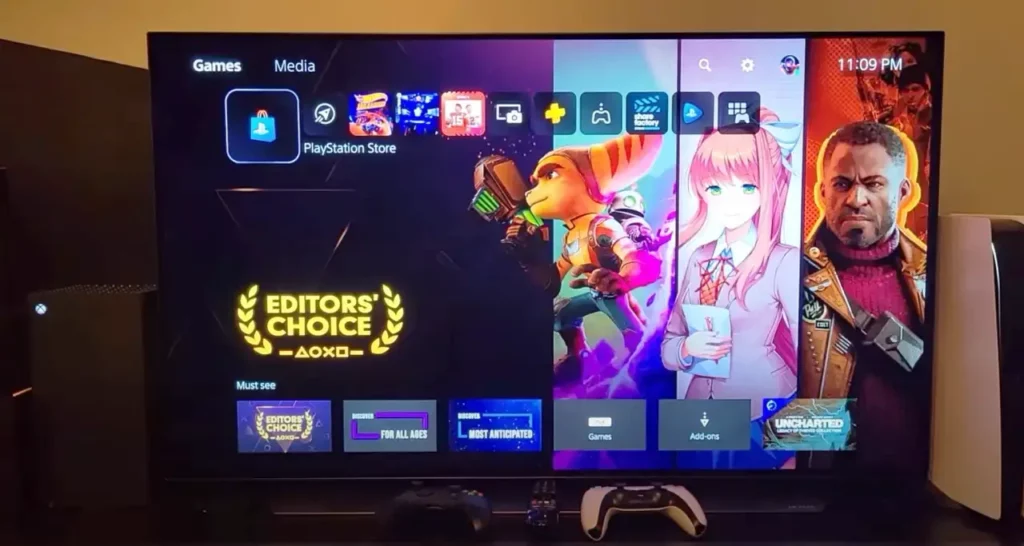
Who Is Verizon Fios Best For
Verizon Fios is the better option for virtually anyone who lives in a Verizon Fios service region. In most cases, Verizon won’t even sell you 5G Home Internet if you live in a Verizon Fios service region. Fios is the service you want if it is available to you.
The performance difference is like night and day. The pricing is also very similar and it is hard to think of a good reason to go for 5G home internet if you can get Fios.
Who is Verizon 5G Home Internet Best For
Verizon 5G Home Internet is best for people who live outside of a Fios coverage area. It is also best for people who lack access to any other cable or fiber-based internet options.
Verizon 5G Home Internet is a great option for people looking for a less expensive solution for home internet. This is especially true if you have a Verizon cell phone plan and can get 5G Home Internet for $25 per month.
5G Home Internet is best for people who do not play online games, work from home, or need absolute connection reliability and stability. For many people, 5G home internet could likely meet their needs. For other people, 5G is simply not stable enough to be a primary home internet connection.
Alternatives to 5G Home Internet and Fios to Consider
There are several alternatives to Verizon Fios and Verizon 5G Home Internet that you should also consider. It is always best to make an informed decision based on all of your potential options for home internet service. Of course, you may not have access to all of these services at your service address. Depending on where you live, you will likely have access to one of these alternatives.
Of the ISPs listed above, AT&T Fiber and Fidium Fiber are the top performers based on my first-hand experience using them. However, Breezeline, Xfinity, and Spectrum also perform well for being DOCSIS 3.1-based services. DOCSIS 4.0 is on the horizon, and that will really take cable internet to whole new levels.
Fiber vs 5G: How do They Work
Verizon Fios is delivered over Verizon’s 100% fiber optic network. This network works by placing an optical network terminal on the side of your residence, connecting it to Verizon’s GPON fiber network. This fiber-to-the-home approach is considered by industry experts to be the optimal method of delivering data services.
5G is 5th generation cellular technology. It builds upon the improvements made with 4G technology while adding new technology to make more efficient use of the wireless spectrum.
Verizon 5G home internet uses 5G / 4G cellular signals to deliver high-speed data services. This works virtually the same way as using the hotspot function on your smartphone.
In fact, you can get a good feel for how the service will perform at your location by turning on the hotspot function of your Verizon smartphone and running a speed test from your computer connected to the hotspot. If the Verizon cellular signal is weak in your home, 5G home internet may not be the best option.
Fiber vs 5G Home Internet: Overall Verdict
Verizon is expanding its home broadband coverage area with the launch of its 5G home internet service. This is great as it provides another option for consumers in a market that is dominated by monopolies and duopolies. Even if 5G service is less than ideal, it is another option and creates additional competition in the market. This is great for consumers because it drives innovation and keeps prices down.
Verizon Fios is the superior product if you can get it at your service address. Right now, coverage is fairly limited because installation requires stringing fiber and often digging trenches. If you are lucky enough to have access to Fios internet, go for it. Even the 300 Mbps tier is fast enough for virtually anyone.
If you do not have access to Fios but have access to Verizon 5G home internet, consider your options. What does your local cable provider offer? In most cases, cable internet is a close second for performance behind fiber-based internet.
If you do not have access to cable internet or simply wish to avoid the local provider, Verizon 5G internet may be a great option, as may Starlink internet service. If you are a gamer, you probably want to avoid Verizon 5G home internet, especially outside of their millimeter wave coverage areas.
Options are a beautiful thing as a consumer, and 5G home internet, along with services such as Starlink, are bringing some much-needed competition to the market. That is good for everyone.
